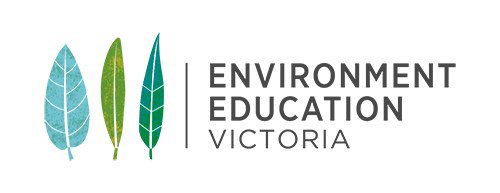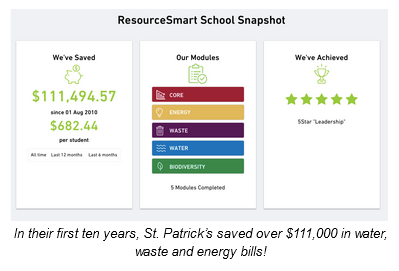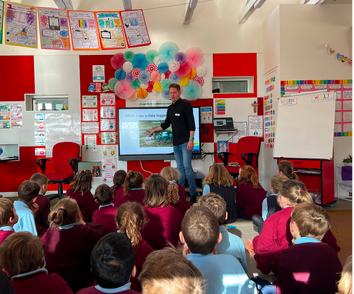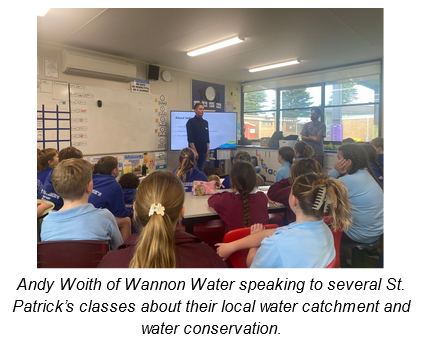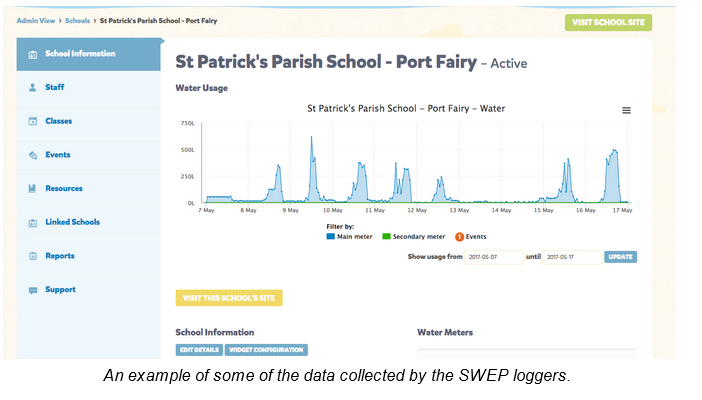Saving water, saving money - the great journey of St Patrick's, Port Fairy
St. Patrick’s School in Port Fairy is a 5 Star ResourceSmart School, and one of our leading examples for the Barwon South West region. This 5 Star status means that St. Patrick’s has completed each of the five modules (core, biodiversity, energy, waste and water) and are at or below Victoria’s benchmarks for energy and water consumption and waste production.
St. Patrick’s began their journey in 2010, and achieved 5 Star status for the first time in April 2019. Since then, they have continued to incorporate sustainability into their everyday school actions, maintaining their certification.
Defending their title
This year, St. Patrick’s water certification was up for renewal so, to maintain its 5 stars, the school turned its focus towards updating their water sustainability programs. St. Patrick’s tried something new this year, running the annual water audit as a more engaging whole school event, which they dubbed “Water Day”. It was very successful, so much so that the school has decided to run the event every year!
The two main foci of Water Day were (1) learning about water conservation with the help of a local expert from Wannon Water, and (2) conducting a school wide water assessment through the Victorian government’s Schools Water Efficiency Program (SWEP).
To kick off Water Day, St. Patrick’s invited Wannon Water representative Andy Woithe to speak to each grade level about their local water catchment and issues of water quality and conservation.
After the discussion time, the students then looked at how well their own school was conserving water, using a water audit guide book created as part of the Schools Water Efficiency Program (SWEP). SWEP is funded by the Department of Environment, Land, Water and Planning and the Department of Education and Training. The program provides schools with water data loggers which they can install on school grounds to monitor water usage, instructions for completing an audit, and support in interpreting the logger results and incorporating the use of water data collected via the loggers into the school curriculum. The loggers had already been deployed a few weeks prior to Water Day, so that the students would be able to look over the results together with Andy.
Senior students explored the data recorded by the water use data logger. They identified water usage peaks between 11 am - 12 noon, which they determined was likely due to this being the time when staff are getting a morning coffee or tea in the staffroom at first break. Guided by this data, all the St. Patrick’s students then set about identifying opportunities to improve water efficiency on the school grounds. The St. Patrick juniors paid particular attention to leaking drains, and searched their grounds for any taps or drains that needed repair.
Students found that, overall, leaks at the school were minimal and there were no unexpected drains on water resources. The students identified a few minor leaks that could use repair, such as in some of the outdoor toilets and drinking fountains, and have identified places where they could add some signage to remind fellow students to be mindful in their water use, such as ensuring twist taps are always fully twisted to the ‘off’ position after use. The students also noted the potential benefits of installing a water irrigation system outdoors, to replace their current large sprinkling system. The students pointed out during that audit that, while an irrigation system would be expensive upfront cost, in the long run it would save a lot of water as they could set days and timers during different systems. The students also suggested they look into always planting their fruit and veggies within their recommended growing seasons, to ensure they are not over watering in the gardens.
The students were able to make some fixes right away. For example, they identified a possible leak point on a hot water service under the sink near the pressure valve, where the pressure builds as hot water service heats up. The students opted to turn down the thermostat to more ideal heat and pressure settings to avoid future leaks.
What’s next?
St. Patrick’s had already secured recertifications for their Waste and Biodiversity modules earlier this year (which will keep their stars active for another 4 years), and their Energy module is under evaluation as we speak. With this year’s water related activities wrapped up, the school will shortly resubmit their water module for recertification, to continue to defend their 5 star status.
St. Patrick’s teacher, Benson Steere, is extremely proud of the achievements of his students and the school’s team of sustainability leaders. “Being a 5 star school is important to us at St Patrick’s Primary School in Port Fairy. Not only is it important to gain the 5 stars, it is important that we keep them and embed all sustainable practices to keep our school, as well as our community a greener, safer place”.
